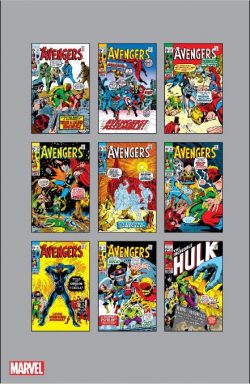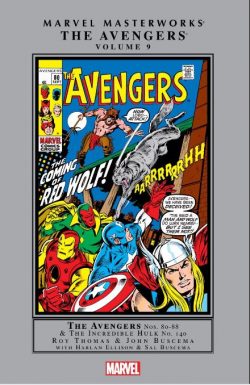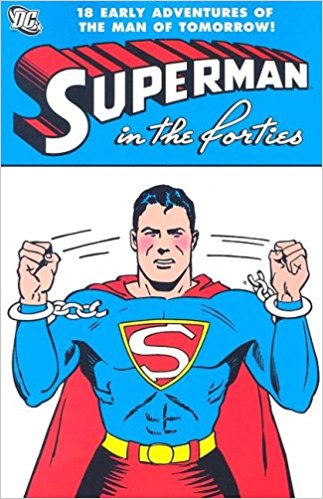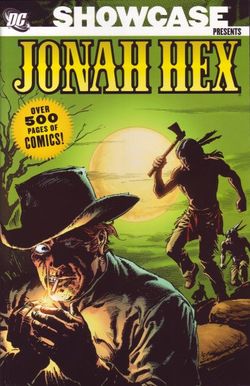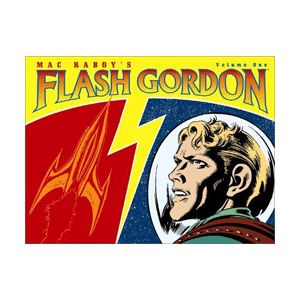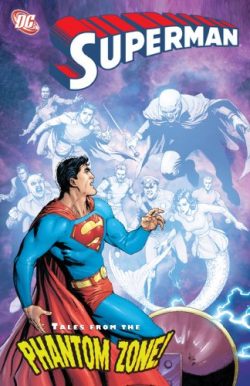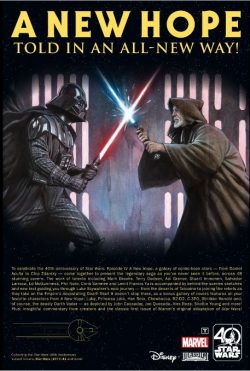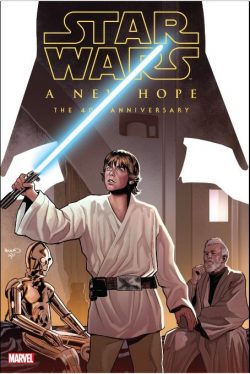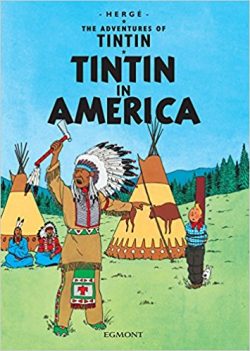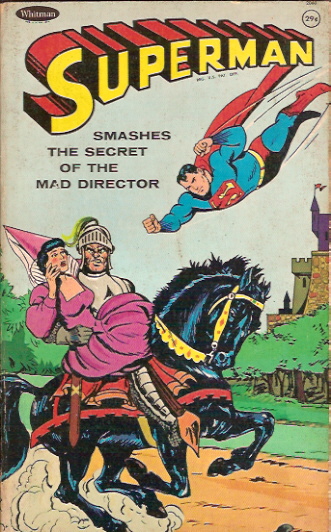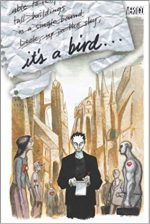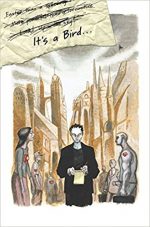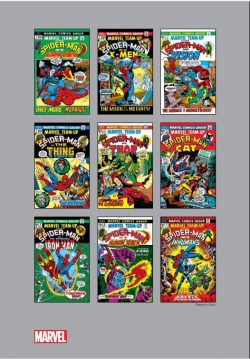
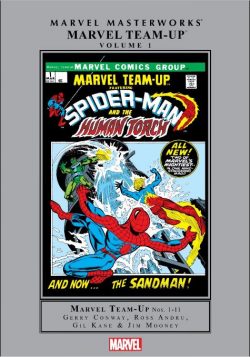
By Roy Thomas, Gerry Conway, Len Wein, Ross Andru, Gil Kane, Jim Mooney & various (Marvel)
ISBN: 978-0-7851-4210-2 (HB)
Inspiration isn’t everything. In fact, as Marvel slowly grew to a position of market dominance in the wake of losing their two most innovative and inspirational creators, they did so less by experimentation and more by expanding proven concepts and properties.
The only real exception to this was the assembly line creation of horror and horror-hero titles in response to the industry down-turn in super-hero sales – a move expedited by a rapid revision in the wordings of the increasingly ineffectual Comics Code Authority rules.
The concept of team-up books – an established star pairing or battling (usually both) with less well-selling company characters – was not new when Marvel decided to award their most popular hero the lion’s share of this new title, but they wisely left their options open by allocating an occasional substitute lead in the Human Torch.
In those long-lost days editors were acutely conscious of potential over-exposure – and since superheroes were actually in a decline they may well have been right.
Marvel Team-Up was the second regular Spider-Man title (abortive companion title Spectacular Spider-Man was created for the magazine market in 1968 but had died after two issues). MTU launched at the end of 1971 and went from strength to strength, proving the time had finally come for expansion and a concentration on uncomplicated action over sub-plots…
This engaging hardback and/or eBook compilation gathers the first 11 issues – covering March 1972 to July 1973 – and opens with scripter Gerry Conway’s engaging recollections in ‘Behold: An Introduction’ before the comicbook magic commences with the webspinner and his flighty flaming frenemy reluctantly spending the holidays together…
Marvel Team-Up #1was crafted by Roy Thomas, Ross Andru & Mike Esposito as a mutual old enemy reared his gritty head in the charming ‘Have Yourself a Sandman Little Christmas!’. A light-heated romp full of Christmas cheer, rambunctious action and seasonal sentiment, the story set the tone for all epics to follow.
Merry Marvelite Maximii can award themselves a point for remembering which martial arts and TV heroine debuted in this issue but the folk with lives can simply take my word that it was Iron Fist‘s sometime squeeze Misty Knight…
Gerry Conway assumed the writer’s role and Jim Mooney the inker’s for ‘And Spidey Makes Four!’ in the succeeding issue as our heroes then take on and trounce the Frightful Four and Negative Zone bogeyman Annihilus before seemingly without pause going after Morbius the Living Vampire in #3’s ‘The Power to Purge!’ (inked by Frank Giacoia).
The new horror-star was still acting the villain in MTU #4 as the Torch was replaced by most of Marvel’s sole mutant team (The Beast having gone all hairy – and solo) in ‘And Then… the X-Men!’
This bold and enthralling thriller was illustrated by the magnificent Gil Kane at the top of his form and inked by Steve Mitchell. Kane became a semi-regular penciller, and his dynamic style and extreme anatomy lifted many rather pedestrian tales such as #5’s ‘A Passion of the Mind!’ (Conway script & Esposito inks), pitting Spidey and The Vision against manipulative mesmeric Puppet Master and robotic assassin the Monstroid.
The villain carried over to the next issue and was joined by the Mad Thinker ‘…As Those Who Will Not See!’ pitted the wallcrawler and the Thing against the cerebral scoundrels in a cataclysmic battle no Fights ‘n’ Tights fan could be unmoved by…
‘A Hitch in Time!’ in #7 was produced by Conway, Andru and Mooney: guest-starring Thor as otherworldly Trolls freeze Earth’s time-line as a prerequisite step to conquering Asgard, after which MTU #8 provides a perfect example of the team-up comic’s other function – to promote and popularise new characters.
‘Man-Killer Moves at Midnight!’ was most fans’ first exposure to The Cat (later retooled as Tigra the Were-Woman) in a painfully worthy if ham-fisted attempt to address feminist issues from Conway and Jim Mooney. The hard-pressed heroes joined forces her to stop a male-hunting murderer paying back abusive men. These days we’d probably be rooting for her…
Iron Man then collaborated in the opening foray of 3-part tale ‘The Tomorrow War!’ (Conway, Andru & Frank Bolle) as he and Spidey are kidnapped by Zarkko the Tomorrow Man to battle Kang the Conqueror. The Torch returned to help deal with the intermediate threat of ‘Time Bomb!’ (with art by Mooney & Giacoia) before the entire race of Black Bolt‘s Inhumans pile in to help Spidey stop history unravelling in culminatory clash ‘The Doomsday Gambit!’ – this last chapter scripted by Len Wein over Conway’s plot for Mooney & Esposito to illustrate.
This initial gathering also includes two splendid samples of Kane original art – a cover and interior page.
These stories are of variable quality but nonetheless all show an honest drive to entertain and please whilst artistically the work is superb, and most fans of the genre would find little to complain about. Although not really a book for casual or more maturely-oriented readers, there’s lots of fun on hand and young readers will have a blast, so surely that’s reason enough to add this titanic tome to your library…
© 1972, 1973, 2018 Marvel Characters, Inc. All rights reserved.

